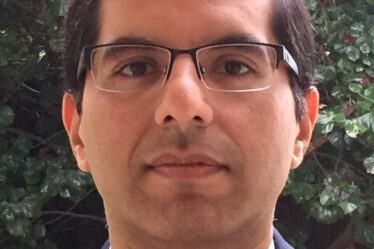Two years ago, Dr. Sankha Mitra—an oncologist who is keen to reduce inequity, injustice and alleviate healthcare-induced poverty— had visited Sevagram. He spoke a sentence that was an eye-opener for the audience.
“In India, the poor die in agony in neglect; the middle-class die in agony in ignorance and the rich die in agony on a ventilator. No one gets a dignified and pain-free death.” Dr. Sankha Mitra painted a poignant picture of the plight of people spending the evening of their life in their homes or hospitals.
This is indeed an oxymoron in healthcare. Although we have injected technology in healthcare, less than 1 percent of the needy have access to palliative care in India.
Little wonder that India is ranked among the worst countries to die in because we are seldom able to take care of pain associated with chronic diseases.
Last fortnight, Dr. MR Rajagopal, the chairperson of Pallium India and his colleagues came to MGIMS to teach the concepts of palliative care to a bunch of doctors and nurses. Over a 10-day period, they taught how to talk with the patients, how to handle their suffering, how to break bad news, how to use morphine to alleviate their pain and how to offer effective therapies to comfort the patients with cancer.
The palliative care specialists also accompanied MGIMS doctors and nurses to see victims of cancer in their home. The team learned that to be able to deliver compassionate care we must understand the patients, their families, their caregivers and socio-economic dynamics that drive their diseases.
Dr. Rajagopal also explained what palliative care is and what it is not. He described the anguish faced by the patients and their families when they have to endure the end of life issues. The hospital rejects the poor and tells them “there is nothing more we can do, so go home”. The middle class borrows to get futile treatment that breaks the family financially. And those who have some money left to pay hospital bills, find themselves imprisoned in intensive care units and put on meaningless artificial life support measures that often cause intense physical, psychological and financial distress.
“Medical students must know how to ease the dis-eased. When we deny access to pain relief and make people endure severe pain and suffering, we deliver cruel, inhuman or degrading treatment or punishment to our patients,” he drew on his three-decade-long experience as a palliative care physician.
The medical students, nurses, and doctors learned an important lesson. Technology is important in medical sciences but the future of medicine is about kindness and compassion.
“This should stop. We should ease the dis-eased. We should blend cure with comfort and ensure that we offer care that enables the person to live, and when the time comes, to die, with as much comfort and dignity as possible,” said one of the students, barely able to control tears welled up in her eyes.
Indeed a key message to the generation that has become enamoured with the technology and the power of science.
————————-
